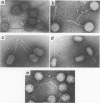Abstract
Eighteen bacteriophages lytic for Vibrio parahaemolyticus were isolated from seawater, and their ultrastructure was examined by electron microscopy. Based on the phage morphology, they were classified in four groups. Group I phages consisted of a hexagonal head and a tail with a contractile sheath. All the phages of the other three groups had a relatively long, noncontractile tail, but there were differences in the head structure among these phages. The phages of groups II and III had a hexagonal head and an elongated polyhedral head, respectively. Group IV phages exhibited a unique hexagonal head with knoblike projections. There appeared to be no correlation between the O and K serotypes of V. parahaemolyticus strains and the host ranges of the phages. The phages had varying sensitivities to heat and organic solvents.
Full text
PDF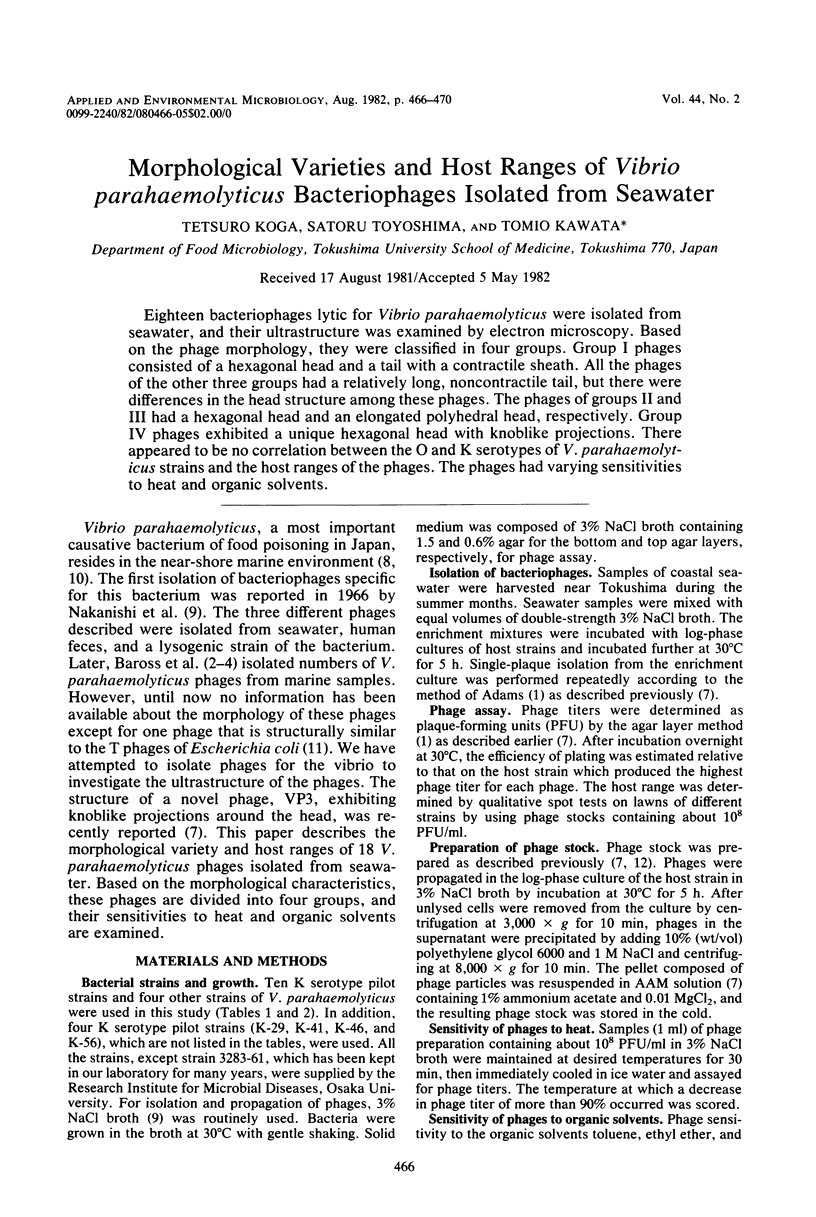
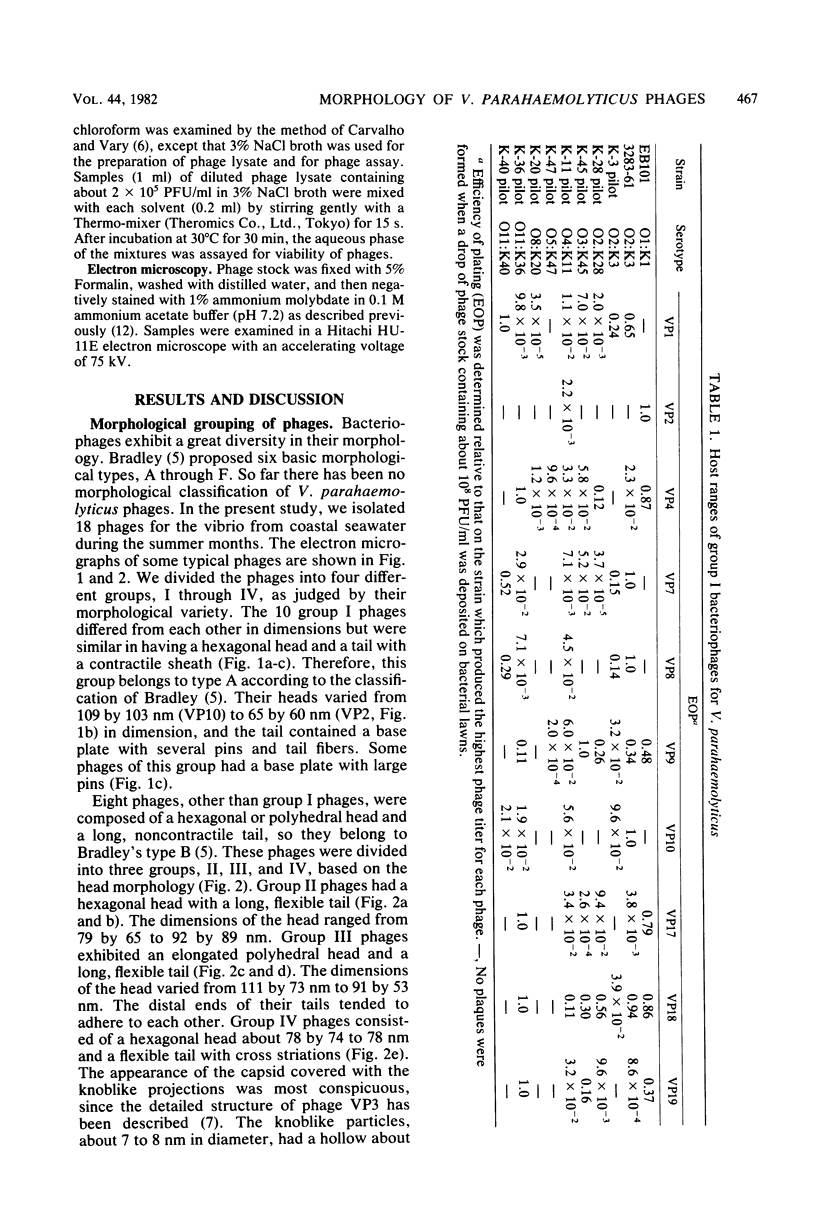
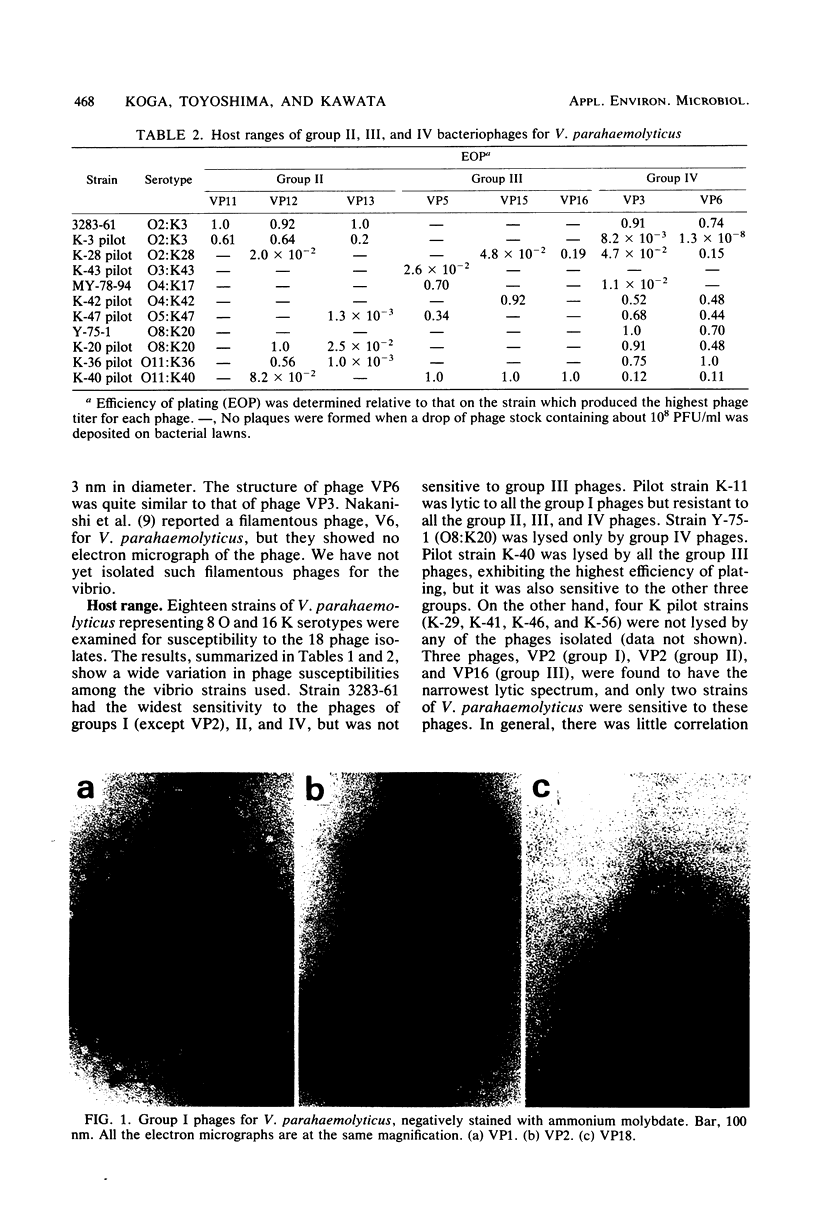
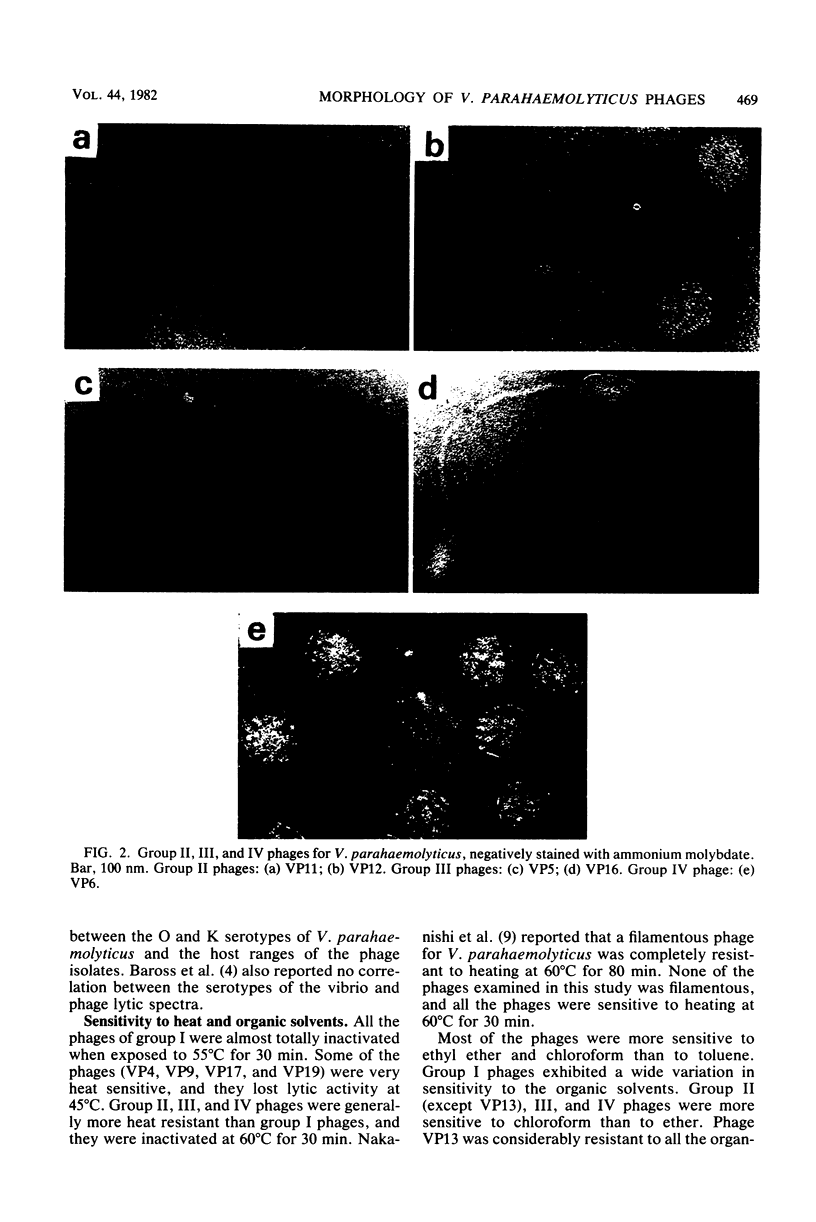
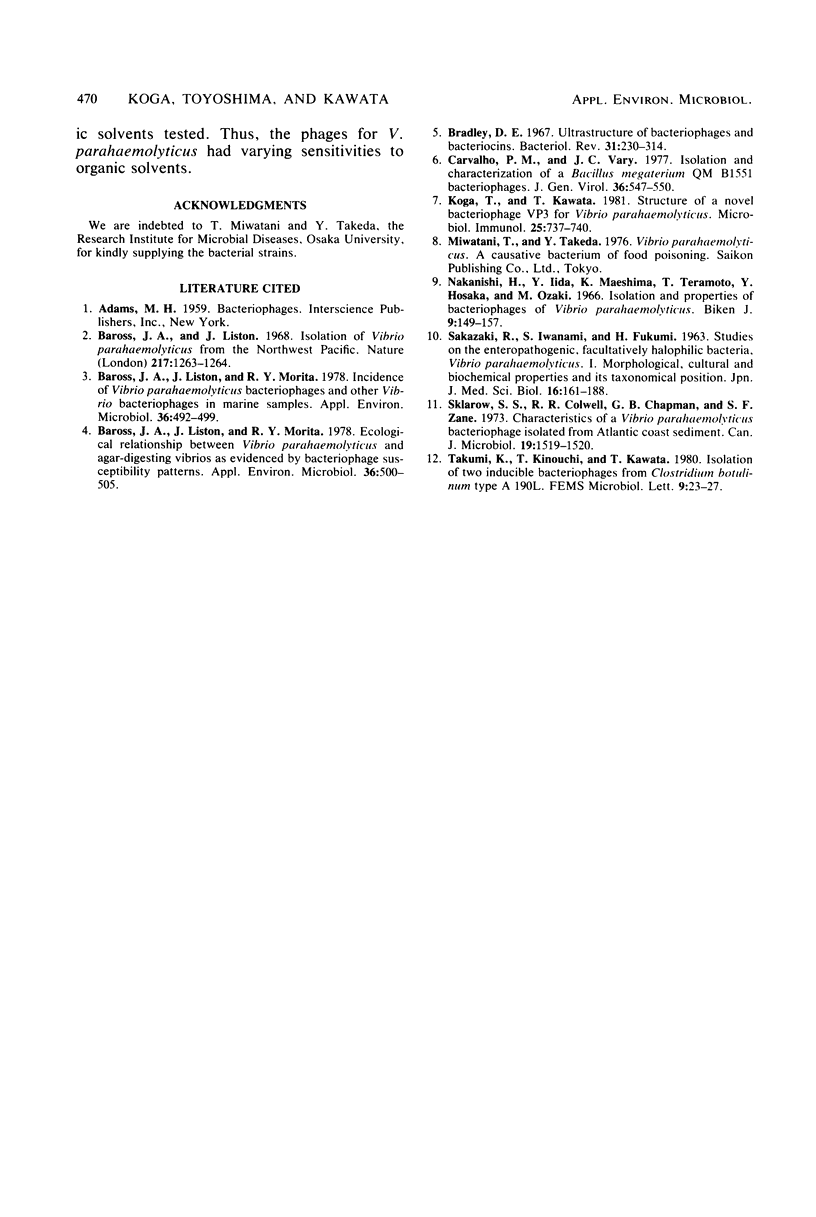
Images in this article
Selected References
These references are in PubMed. This may not be the complete list of references from this article.
- Baross J. A., Liston J., Morita R. Y. Ecological relationship between Vibrio parahaemolyticus and agar-digesting vibrios as evidenced by bacteriophage susceptibility patterns. Appl Environ Microbiol. 1978 Sep;36(3):500–505. doi: 10.1128/aem.36.3.500-505.1978. [DOI] [PMC free article] [PubMed] [Google Scholar]
- Baross J. A., Liston J., Morita R. Y. Incidence of Vibrio parahaemolyticus bacteriophages and other Vibrio bacteriophages in marine samples. Appl Environ Microbiol. 1978 Sep;36(3):492–499. doi: 10.1128/aem.36.3.492-499.1978. [DOI] [PMC free article] [PubMed] [Google Scholar]
- Baross J., Liston J. Isolation of vibrio parahaemolyticus from the Northwest Pacific. Nature. 1968 Mar 30;217(5135):1263–1264. doi: 10.1038/2171263a0. [DOI] [PubMed] [Google Scholar]
- Bradley D. E. Ultrastructure of bacteriophage and bacteriocins. Bacteriol Rev. 1967 Dec;31(4):230–314. doi: 10.1128/br.31.4.230-314.1967. [DOI] [PMC free article] [PubMed] [Google Scholar]
- Carvalho P. M., Vary J. C. Isolation and characterization of a Bacillus megaterium QMB1551 bacteriophage. J Gen Virol. 1977 Sep;36(3):547–550. doi: 10.1099/0022-1317-36-3-547. [DOI] [PubMed] [Google Scholar]
- Koga T., Kawata T. Structure of a novel bacteriophage VP3 for Vibrio parahaemolyticus. Microbiol Immunol. 1981;25(7):737–740. doi: 10.1111/j.1348-0421.1981.tb00076.x. [DOI] [PubMed] [Google Scholar]
- SAKAZAKI R., IWANAMI S., FUKUMI H. STUDIES ON THE ENTEROPATHOGENIC, FACULTATIVELY HALOPHILIC BACTERIA, VIBRIO PARAHAEMOLYTICUS. I. MORPHOLOGICAL, CULTURAL AND BIOCHEMICAL PROPERTIES AND ITS TAXONOMICAL POSITION. Jpn J Med Sci Biol. 1963 Aug;16:161–188. doi: 10.7883/yoken1952.16.161. [DOI] [PubMed] [Google Scholar]
- Sklarow S. S., Colwell R. R., Chapman G. B., Zane S. F. Characteristics of a Vibrio parahaemolyticus bacteriophage isolated from Atlantic coast sediment. Can J Microbiol. 1973 Dec;19(12):1519–1520. doi: 10.1139/m73-248. [DOI] [PubMed] [Google Scholar]




